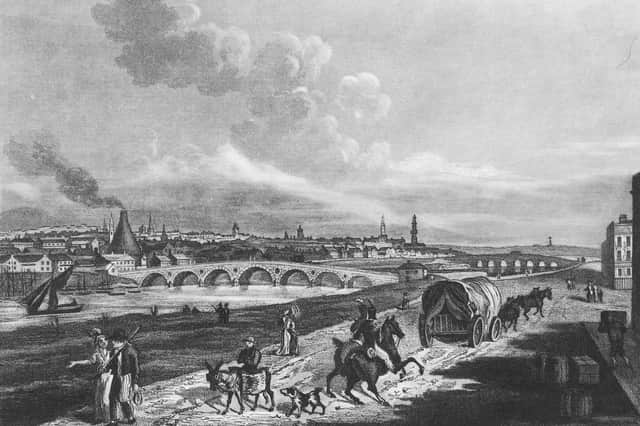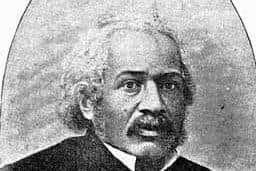Dr James McCune Smith: How an African American doctor in 19th-century Scotland took on his boss to stop prostitutes being used as human guinea pigs – Susan Morrison


We pride ourselves on building good doctors in Scotland. James McCune Smith was one of the most remarkable. He wasn’t Scottish, but then, neither was Lister. McCune Smith was American, born in 1813 in New York. His mother was a runaway slave and he was the first African American to graduate as a doctor, and he got his degree from Glasgow University in 1837.
He arrived in a boomtown 1830s Glasgow fuelled by the coal of the Industrial Revolution and choking on the smoke. The university boasted a world-class medical programme, its training possibly supercharged by the huge filthy city on its doorstep. After all, what you basically had there was a massive pool of unknowing human guinea pigs for any new treatments you wanted to roll out.
Advertisement
Hide AdAdvertisement
Hide AdThe city was awash with the usual diseases of overcrowding and poverty, including what we now call sexually transmitted diseases, something that filled McCune Smith’s wards. He’d graduated with honours, naturally. He doesn't seem to have done anything by halves.
He was quickly offered a prestigious clinical residency at the Glasgow Lock Hospital for Unfortunate Females. The clue is in the title. These were the ‘fallen women’ who had developed the sexually transmitted diseases you expect to see in sex workers, although not all of the women there were prostitutes. After all, this was a time when an infected man was under no obligation to reveal to even his wife, or bride-to-be, that he had gonorrhoea, or shockingly, syphilis.
The hunt for the cure for STIs was highly competitive. The first person to crack the cure could look forward to awards and glory, and perhaps it was this ambition that drove a senior doctor at the hospital, Dr Alexander Hannay, to trial a treatment that was almost inhuman in its practice. No, he didn’t bother getting informed consent.
The trial utilised a newish chemical, silver nitrate. Some doctors had been using diluted silver nitrate to stop bleeding on surface lesions and wounds. Hannay began treating his female patients with concentrated silver nitrate, and published his results in a paper entitled the “Permanent Cure of…Gonorrhoea by Solid Nitrate of Silver”. It all looked very promising.
It was anything but. McCune Smith worked those wards and knew these women. Something was wrong with the sunny outlook Hannay was presenting. McCune Smith was suspicious. In today’s language, we’d say he crunched the numbers.


He knew something was very wrong with Hannay’s stats. Medical statistics was a new science, but like everything else McCune Smith did, he excelled at this new discipline. Those numbers told him that Hannay’s treatment was dangerous, ineffective and deadly.
Worse, Hannay and his team were covering up the failure of this barbaric treatment by keeping “out of view the evidence of the severity of the treatment, and the amount of mortality”. They were booting women out early, claiming they had been cured, only to see them hobbling back days later. Women were dying, but because no one knew the effects of silver nitrate on internal organs, these deaths were not reported as part of the trial.
McCune Smith went beyond the dry statistics, as horrifying as they were. He spoke to the women Hannay treated. They told him of a dreadful treatment that it felt like it was “burning their inside with caustic”. Oh, they said, they had told Hannay and his team about this agony, but he refused to believe them, calling them dishonest and unreliable. McCune Smith believed them. He put their testimony into the heart of his furious denunciation of a doctor who was committing the ultimate betrayal of trust, and lying about it.
Advertisement
Hide AdAdvertisement
Hide AdHis takedown of Hannay was ferocious and beautifully written. He published in the London Medical Gazette, becoming possibly the first African American medical doctor to be published in any scientific journal. He publicly named and shamed Hannay, tore his stats apart and reported the terrible human cost of the experiment. He demanded the trial be halted.
The idea of a black man facing down a white doctor was shocking, and the mere notion of a male physician listening to desperate women and believing them was unthinkable to the medical establishment of the time. To trust the word of prostitutes above an educated man could end careers, especially since that man was McCune Smith’s superior at the hospital.
But he didn’t care. He had been raised in unthinkable poverty in Manhattan, in constant fear of slave hunters who could legally seize black men and women from the streets of New York. McCune Smith was a man who never forgot where he came from. He would not stand by and watch impoverished women being treated like lab rats. What happened in the end is still the subject of research.
When he left us and returned to America, I imagine the truly good and great of the city were sad to see him go. Back in New York, he carried on energetically running orphanages, pharmacies, practising medicine, and making life miserable for purveyors of crank medicine. He campaigned constantly for the abolition of slavery and lived long enough to see the Thirteenth Amendment enshrined in the US Constitution.
There is a hub in his name at the University of Glasgow, but little else in the city that gave him that training, and where he epically faced off with Hannay. Glasgow should be proud to lay a claim to and honour McCune Smith, and we can thank the tireless work of Professor Matthew Daniel Eddy of Durham University, who uncovered the remarkable story, not just of the first African American to get a medical degree from a UK university, but the equally compelling story of the sheer courage and humanity of Dr James McCune Smith, MD.
Comments
Want to join the conversation? Please or to comment on this article.
